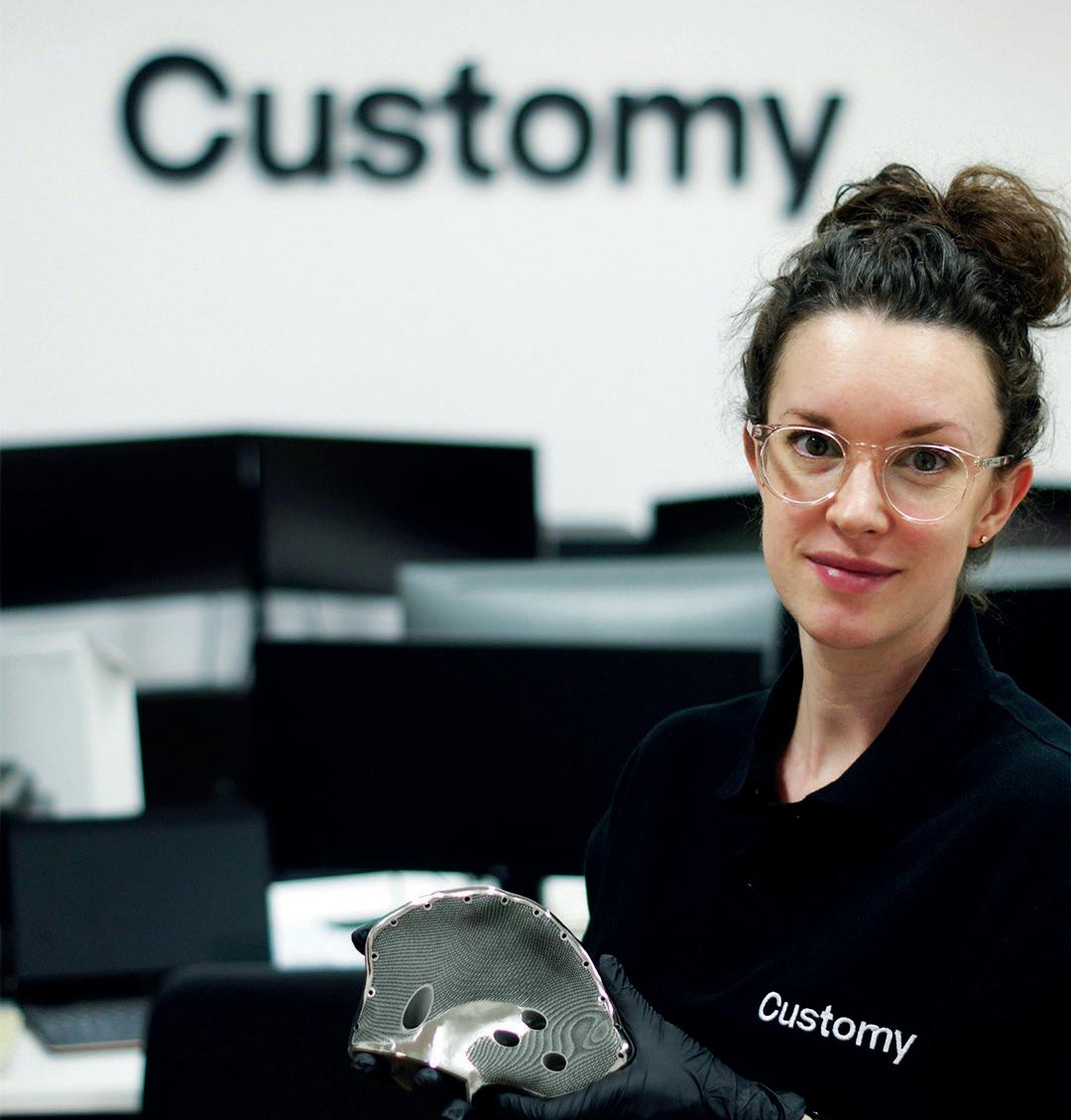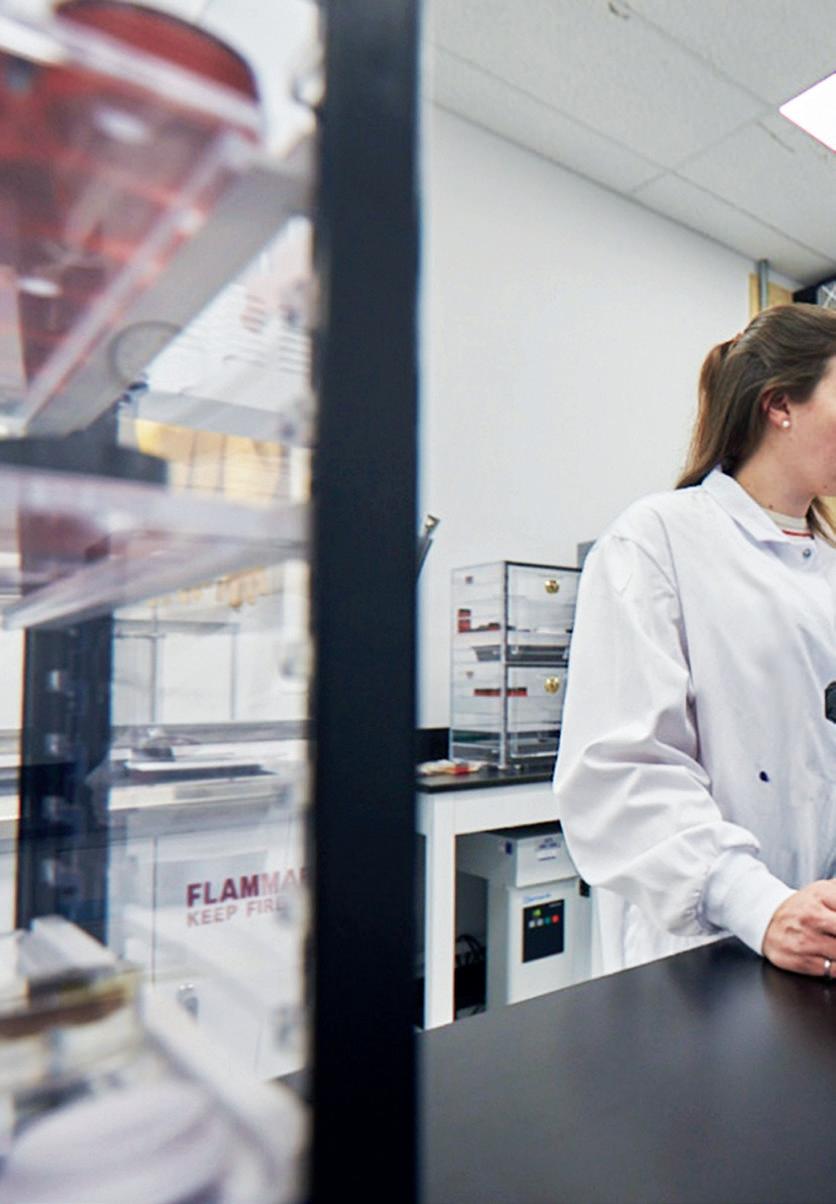RIGHT TO RE-PRINT WORDS: LAURA GRIFFITHS
I
n just the last six months, my washing machine has broken down twice. It’s over ten years old so the length of time taken to source and install parts meant several weeks of handing over a laundry bag to my parents like I was an 18-year-old student going home for the weekend again. It got me thinking about a presentation by industry consultant Phil Reeves back at CES in 2015: the teardown of a Bosch washing machine to see which components could and couldn't be 3D printed. While the technologies referenced have evolved in the intervening years, its message, that the economics don’t always add up to AM, continues to offer a relevant dose of pragmatism whenever the topic of spare parts is raised. “I think if we did this study now, we'd find a lot more viable components that are either economically viable to 3D print or materials that are more suited,” Reeves recounted in a recent call with TCT. “Personally, I still think the whole spare part debate comes down to material properties. Do we have an available additive material that is fit for purpose to replace the spare part? The right to repair thing is going to be really interesting in that, yes, we have a right to repair but where does the liability sit if you take the choice of repair? Because unless the part was initially designed to be made by 3D printing, it's always going to be kind of a Band-Aid.” While recent conversations around supply chain have put AM and digital inventories under the spotlight, 3D printing replacement parts is nothing new. Back in 2012, Swedish consumer electronics manufacturer Teenage Engineering made some of its components available via online 3D printing provider Shapeways to combat high shipping costs associated with replacement parts for its OP-1 Synthesizer. “Companies like Teenage Engineering highlight one of the greatest benefits in 3D printing, allowing anyone to take control of creating spare parts, and pushing back against the ongoing issue with products that can be impossible to repair,” Christopher Angi, Director of Sales at Shapeways, told TCT. “On the larger scale, we see the ability to 3D print spare parts and eliminate enormous
022 / www.tctmagazine.com / 30.2
amounts of warehouse space – along with the long-winded chain of communication it can take just to get one or a few parts – replaced by digital inventories. We are working with companies in several verticals who are already doing this, or considering the transition. We also see a trend in companies who want to focus on sharpening their own specialties while outsourcing 3D printing services for functional parts related to maintenance, repair, and operations (MRO).”
Where the volumes are right or a redesign beneficial, the case for AM can be made but for many parts, traditional methods of manufacture are still the way to go. Reeves recalls a visit to the warehouse of one of Europe’s largest white goods spare parts suppliers almost a decade ago. An analysis of the millions of SKUs on-hand was conducted but Reeves concluded “you could literally count on one hand the ones that were viable 3D prints.” “Some of those were viable for printing but the vast majority of parts that fail are not the mechanical principal parts,” Reeves continued, noting cast metal parts such as metal hob burners which might otherwise prove costly to reproduce with traditional tooling. “The vast majority of white goods parts that fail are electrical parts systems, interlock switches because they wear out, motors, bearings, it's all things that are actually not particularly printable.” For those parts where 3D printing does make sense, 3D printer manufacturer and service provider Ricoh 3D has been deploying AM for spare parts both internally and for customers. The company has adopted a ‘one-on-the-
shelf’ model for its own spare parts, with engineers at Ricoh UK's Products Limited site swapping out critical factory jigs and automation tooling for AM alternatives. In one customer example, domestic equipment consortium Groupe SEB worked with Ricoh 3D to redesign an obsolete drip collector for an espresso machine. The company already offers 3D printed spare parts for several products as part of a 10-year repair scheme guarantee, and was able to successfully perform 1,000 coffee cycles with this SLS spare. Mark Dickin, Additive Manufacturing & Molding Engineering Manager at Ricoh 3D, told TCT: “The project demonstrates how 3D printing allows small intricate products to be









